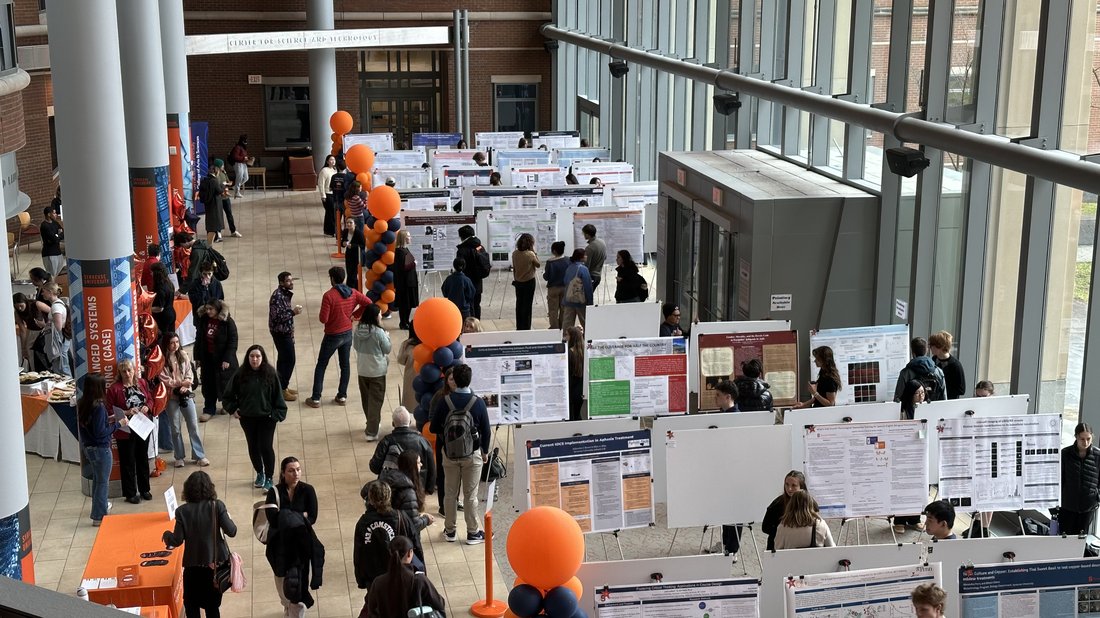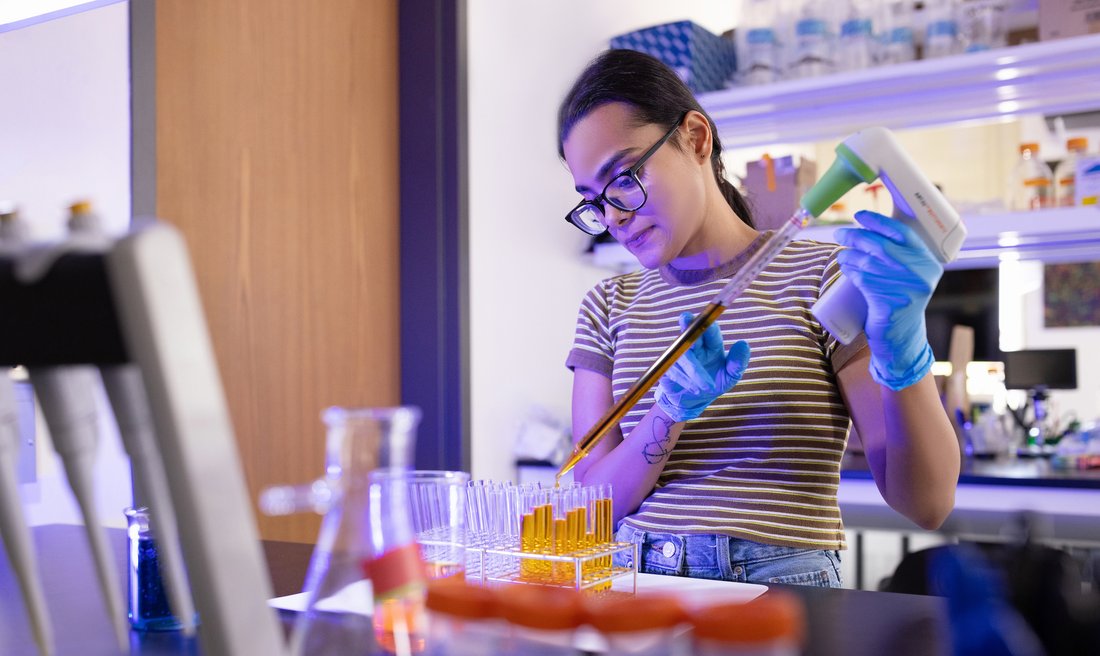Summer Research: Major Impact
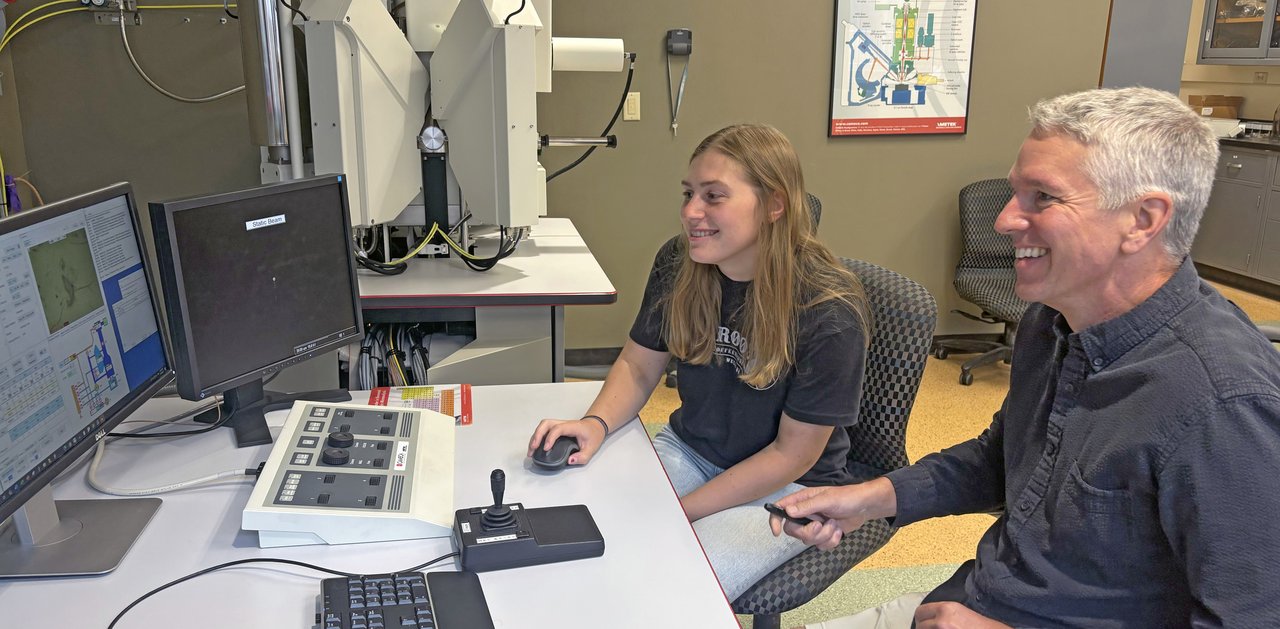
While summer may bring a quiet calm to the Quad, the drive to discover at Syracuse University never rests. The usual buzz of students rushing between classes may fade, but inside the labs of the College of Arts and Sciences (A&S), the hum of collaboration is in full swing. Undergraduate and graduate students dedicate their summer to tackling some of the world’s most pressing challenges alongside faculty mentors, from advancing healthcare solutions to driving technological breakthroughs.
This transformative research is fueled by a variety of funding sources, including prestigious federally funded programs like the National Science Foundation’s Research Experiences for Undergraduates (REU). Through REU, students from Syracuse University and other institutions gain immersive, hands-on experience in fields ranging from science to engineering to mathematics, working side-by-side with faculty mentors on projects that have the potential to shape industries and improve lives.
Syracuse University also champions student research through initiatives like the SOURCE (Syracuse Office of Undergraduate Research and Creative Engagement). These programs empower students to contribute meaningfully to faculty-guided research and creative endeavors, equipping them with the skills to produce original, timely and significant work. From developing new materials to advancing environmental solutions, discover how summer research is driving real-world change and shaping a better future.
Nature-Inspired Innovation
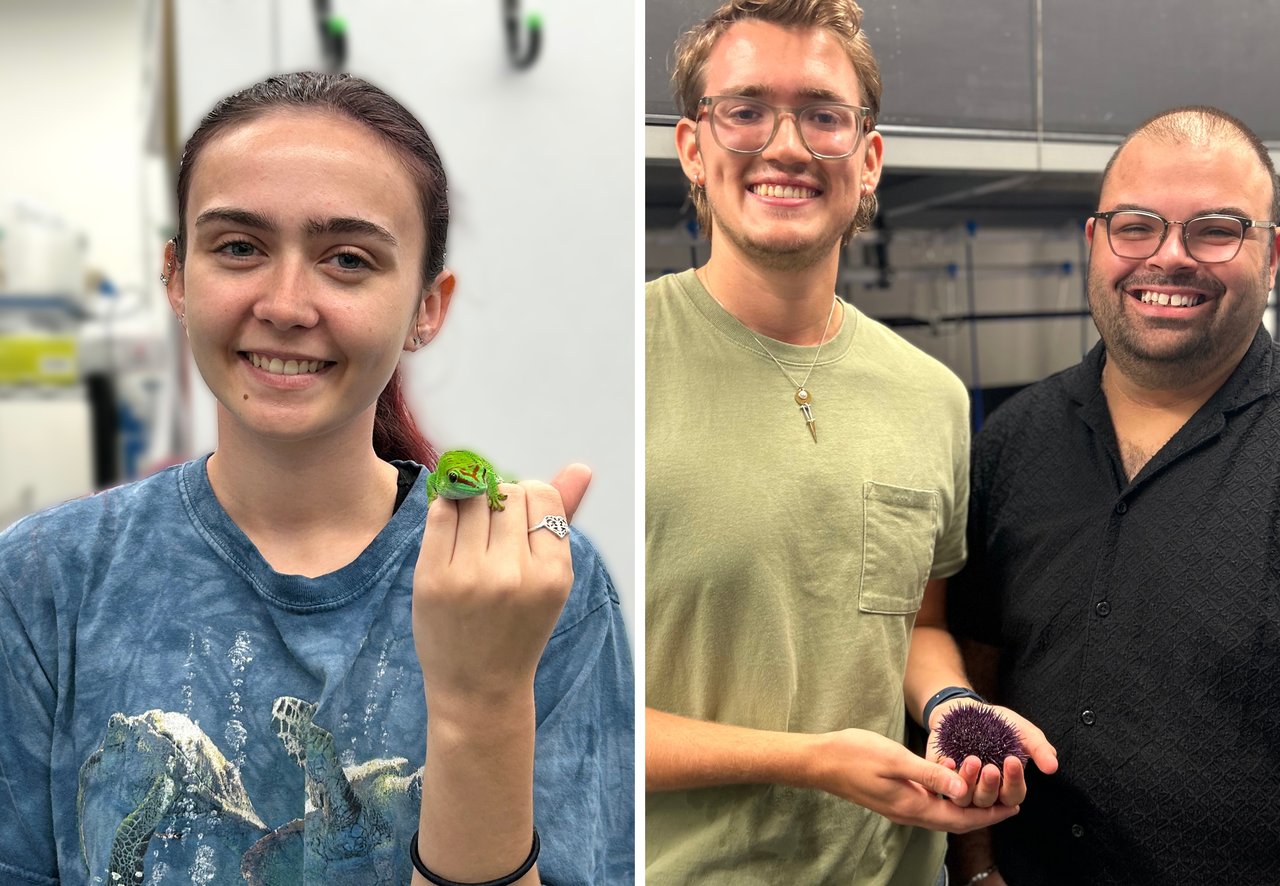
In biology Professor Austin Garner’s lab, A&S students Nathan Bailey and Sadie Heidemann received support from the SOURCE to pursue hands-on research projects exploring how animals adapt to environmental challenges.
Bailey’s research focuses on the impact of climate change on sea urchins, specifically examining how their ability to grip surfaces changes with varying salinity levels. Sea urchins are key players in marine ecosystems. As ocean temperatures rise, understanding how sea urchin populations respond is critical: overpopulation in kelp forests can devastate this key food and habitat source for other organisms by creating barren seascapes, while population decline in coral reefs can lead to unchecked algal growth, disrupting biodiversity.
Heidemann’s work investigates how geckos use their tails to navigate complex terrain. By analyzing tail-assisted movement across different surfaces, her research sheds light on how species evolve to meet environmental demands. This knowledge not only deepens our understanding of animal biomechanics but also informs the development of bio-inspired technologies such as advanced robotics designed for search and rescue missions in rugged, unpredictable environments.
Improving Cancer Treatment
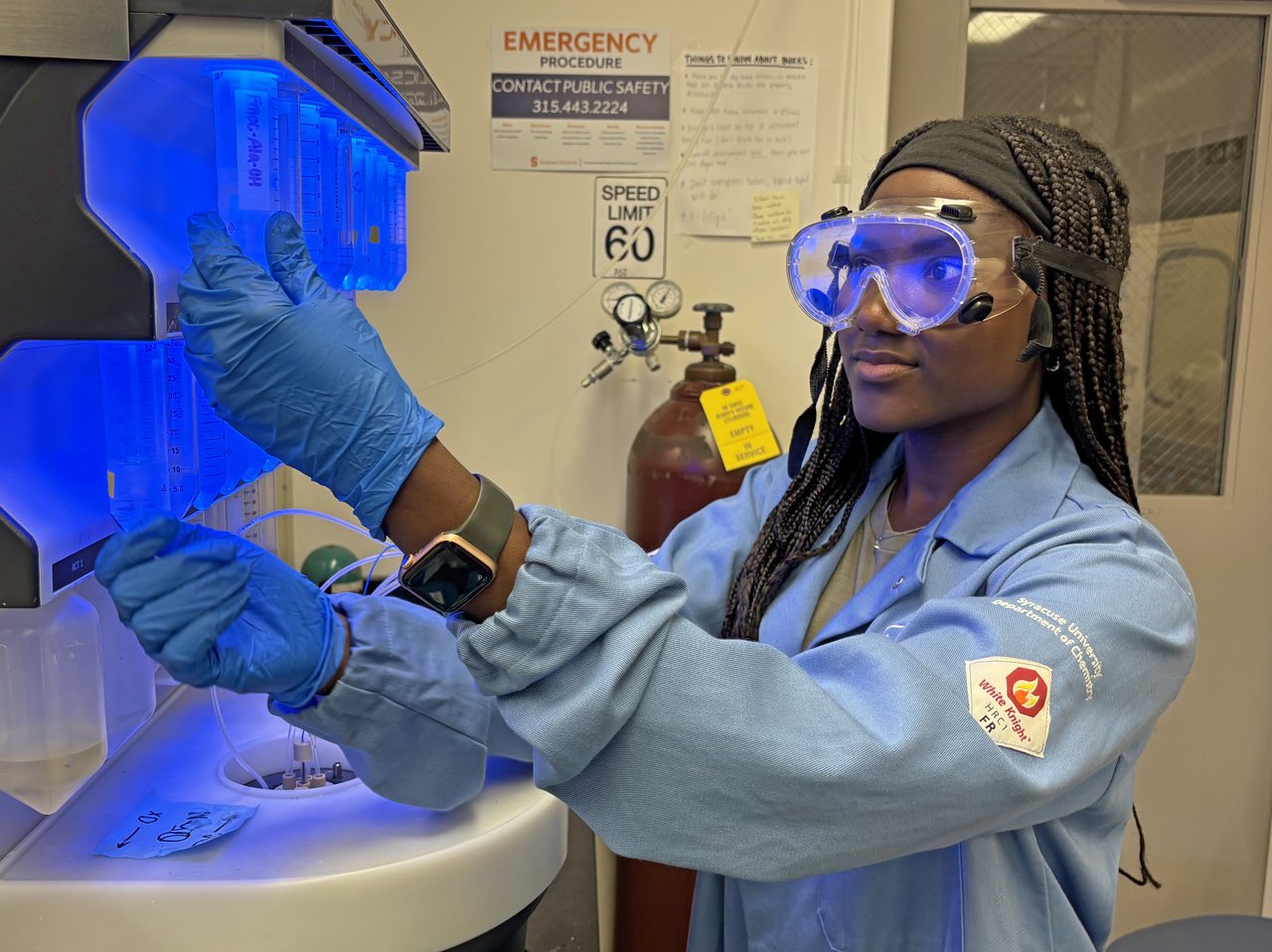
Naomi Nance spent her summer working on peptide synthesizers in chemistry professor Robert Doyle’s lab at Syracuse University. As part of her work, Nance helped develop a peptide antagonist targeting the GFRAL receptor in the central nervous system—an area linked to nausea and vomiting, especially in chemotherapy patients—offering hope for improved symptom management. A chemistry undergraduate at the University of Maryland, Baltimore County, she joined Doyle’s lab through the chemistry REU program and found the hands-on research both enlightening and inspiring, offering a glimpse into the impact scientific discovery can have on real-world health challenges.
Unraveling the Mysteries of Fertility
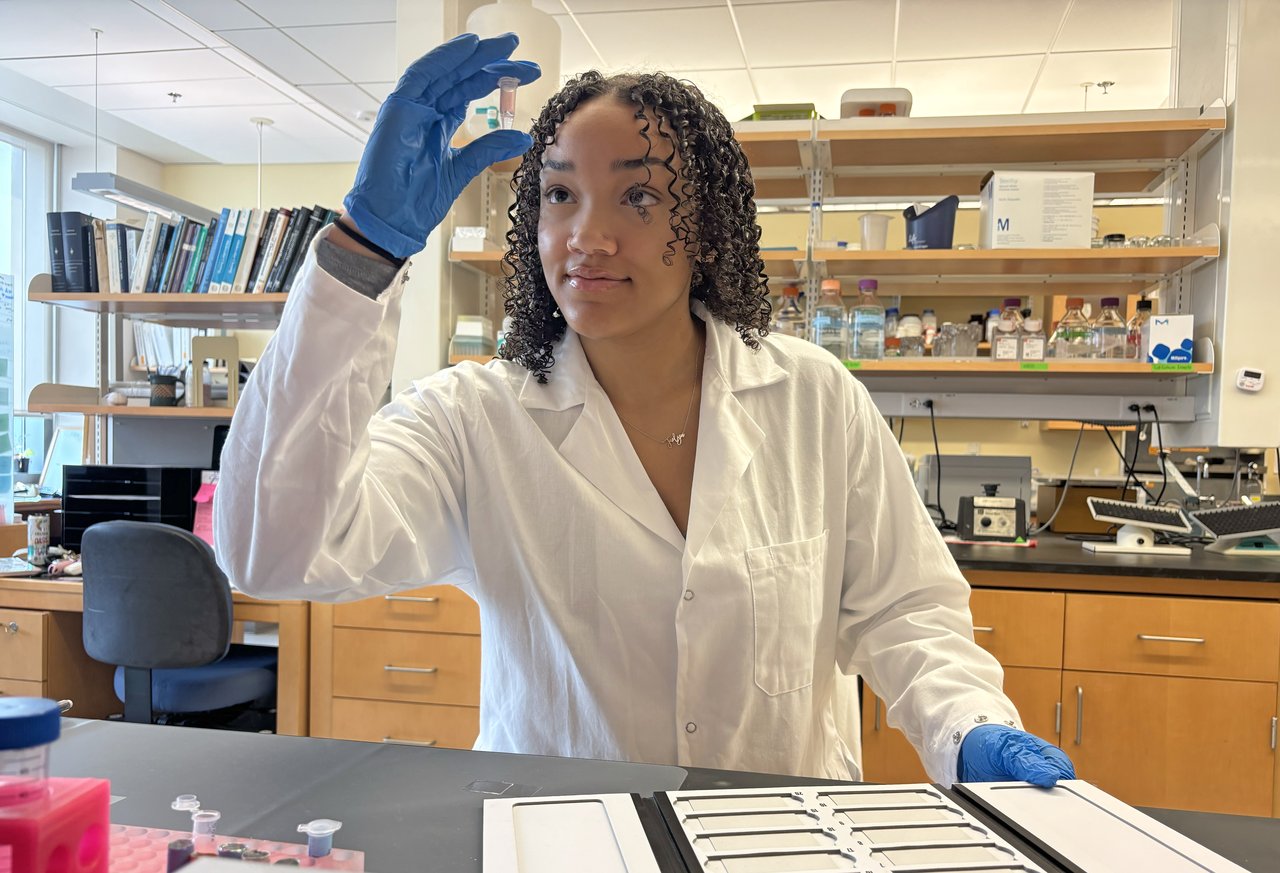
In Professor Melissa Pepling’s lab, students are exploring how egg cells (called oocytes) develop in the ovaries and how hormones influence this process. Using mice, they study how tiny structures called follicles form and how the body decides which ones to keep—an essential process that helps determine a female’s reproductive potential. This summer, Lauren Erickson, a biochemistry and neuroscience major at Syracuse University, focused on insulin signaling in the ovary to better understand its role in infertility. Jaelyn Anderson, an undergraduate student at North Carolina Agricultural and Technical State University and participant in the Department of Biology’s REU program, also investigated how insulin impacts female fertility, especially in conditions like PCOS (Polycystic Ovary Syndrome), a hormonal disorder that can disrupt ovulation and make it harder to conceive. Both students found the experience eye-opening, offering them a deeper understanding of reproductive biology.
Mining Precious Metal Insights
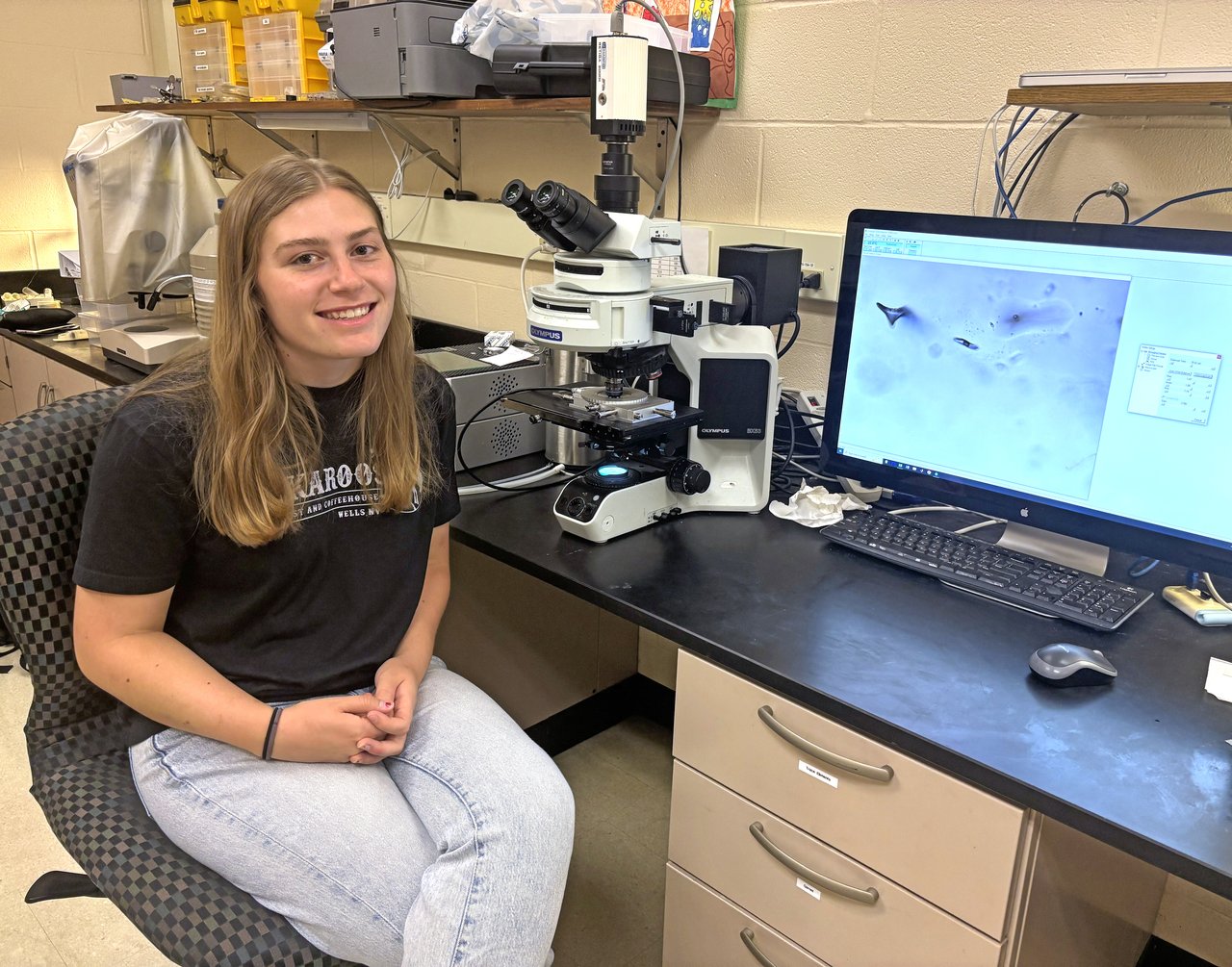
Emerson Long, a senior geology major in A&S, spent the summer conducting research in Earth and environmental sciences Professor Jay Thomas’ lab. Her work focused on making fluid inclusions, which are tiny pockets of fluid trapped in minerals. Long synthesized these inclusions at extreme pressures and temperatures to better understand how copper partitions between aqueous fluids and silicate melts at conditions equivalent to magmatic source regions in the lower continental crust. Her research has broader implications for locating copper deposits higher in the Earth’s crust, which is crucial for sourcing critical minerals needed in clean energy technologies. Funded by support from the SOURCE, she gained valuable lab skills and a glimpse into graduate-level research, aligning with her aspiration to pursue graduate studies after completing her undergraduate degree.
Published: Aug. 28, 2025
Media Contact: dtbernar@syr.edu

